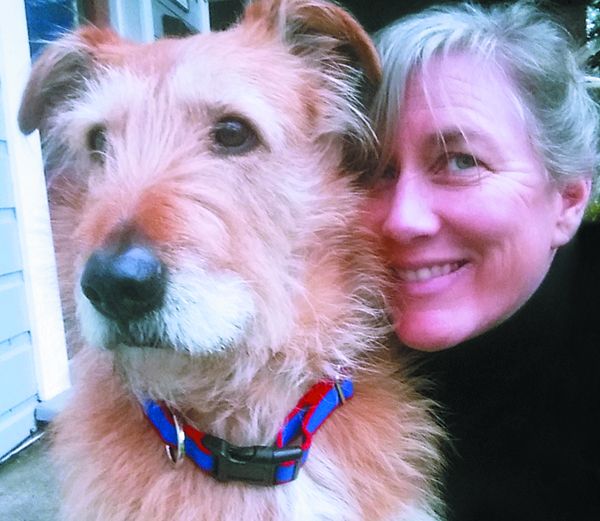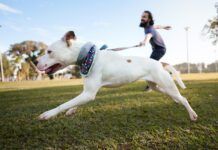I’m not sure exactly what started it, but it seems that there is a big public fight about dog training currently being fought in the digital ether. On one side we have Team Sometimes You Have to Use Force, and on the other we have Team No You Absolutely Do Not. Unfortunately, as with so many of the divisive matters of today, I’m not sure that any of the arguments are going to cause any miraculous changes of hearts or minds.
I’m firmly in the camp of Team No You Absolutely Do Not – but I don’t want to fall into the same trap as many of my friends, trying to talk about the rationale for my membership on Team NYADN. The best way to change someone’s mind, I think, is to see a master animal trainer at work with a species of animal that you can’t use force, fear, or pain with.
Over the years, attending various dog-training conferences, I’ve been lucky enough to see people train goldfish to dunk tiny underwater basketballs through tiny underwater basketball hoops on cue; try that with a shock collar! I’ve seen trainers who taught a wide-awake, unanesthetized hippo with an abscessed tooth to hold her mouth open wide on cue so that a veterinary dentist could drill and fill the tooth; she did it in exchange for bits of melon. I met a trainer who taught a completely unrestrained elephant in a state of musth – a condition in male elephants characterized by aggressive behavior due to a periodic rise in reproductive hormones – to blow bubbles in a bucket of antiseptic, thus self-treating a deep and painful wound in his trunk. Apples provided the incentive for his veterinary-care parlor trick.
And, of course, I’ve seen many trainers and veterinary behaviorists who specialize in treating canine aggression work with those dogs without ever causing the dog to behave in an aggressive manner. It takes skill, patience, and a whole lot of treats, but when you see it happen for yourself, it’s so moving. When you see a wary, reactive dog learn the basic precepts of communication with a handler, gain trust that he won’t be hurt or forced into a situation he can’t handle calmly, and transform into a soft, relaxed dog who can make socially acceptable choices in response to situations or humans or dogs who scare him – well, suffice to say that if you endeavor to see such a trainer work with such a dog, I feel certain that I will see you at future Team NYADN meetings. I’ll be eager to share how much more we can accomplish with dogs without force or fear.






